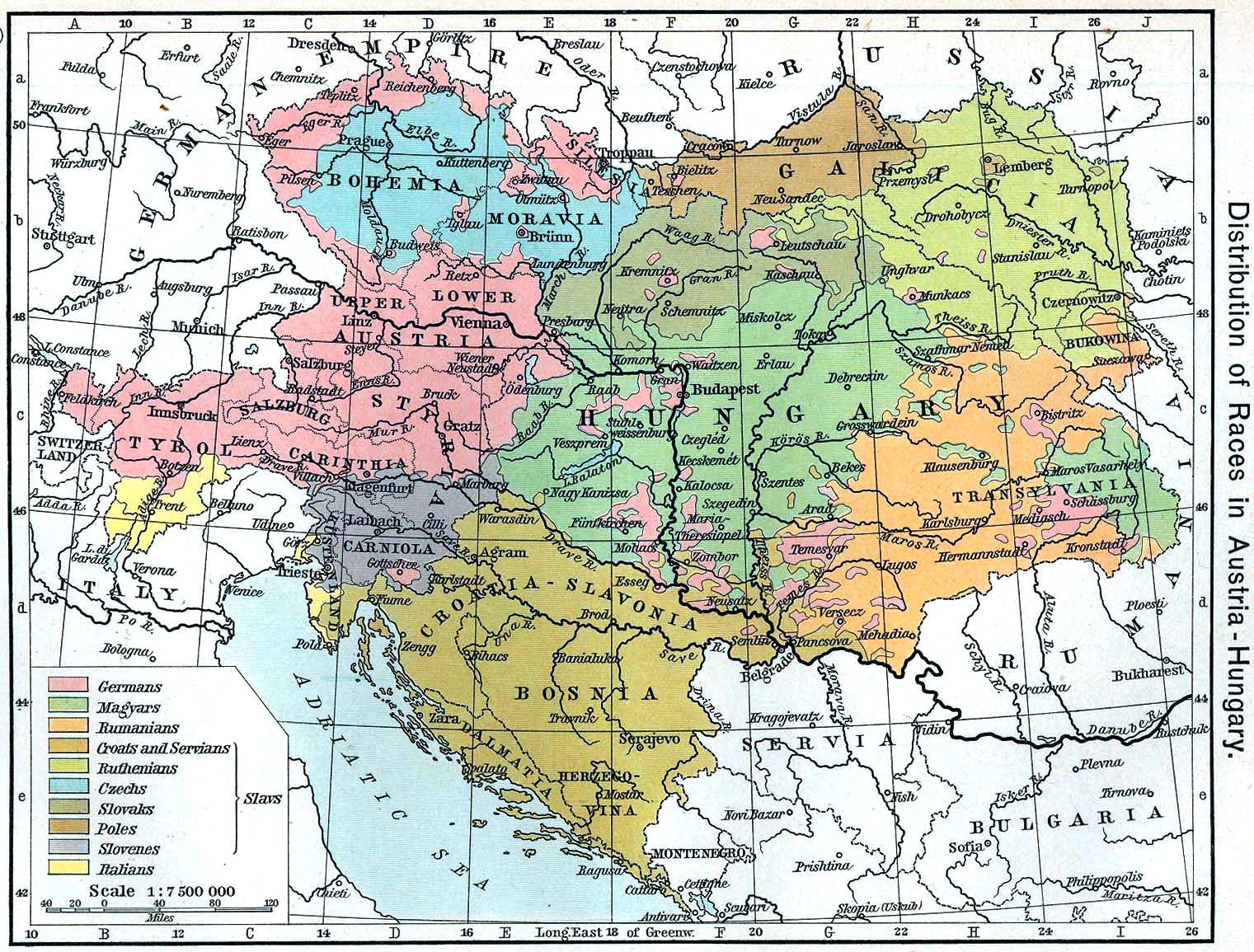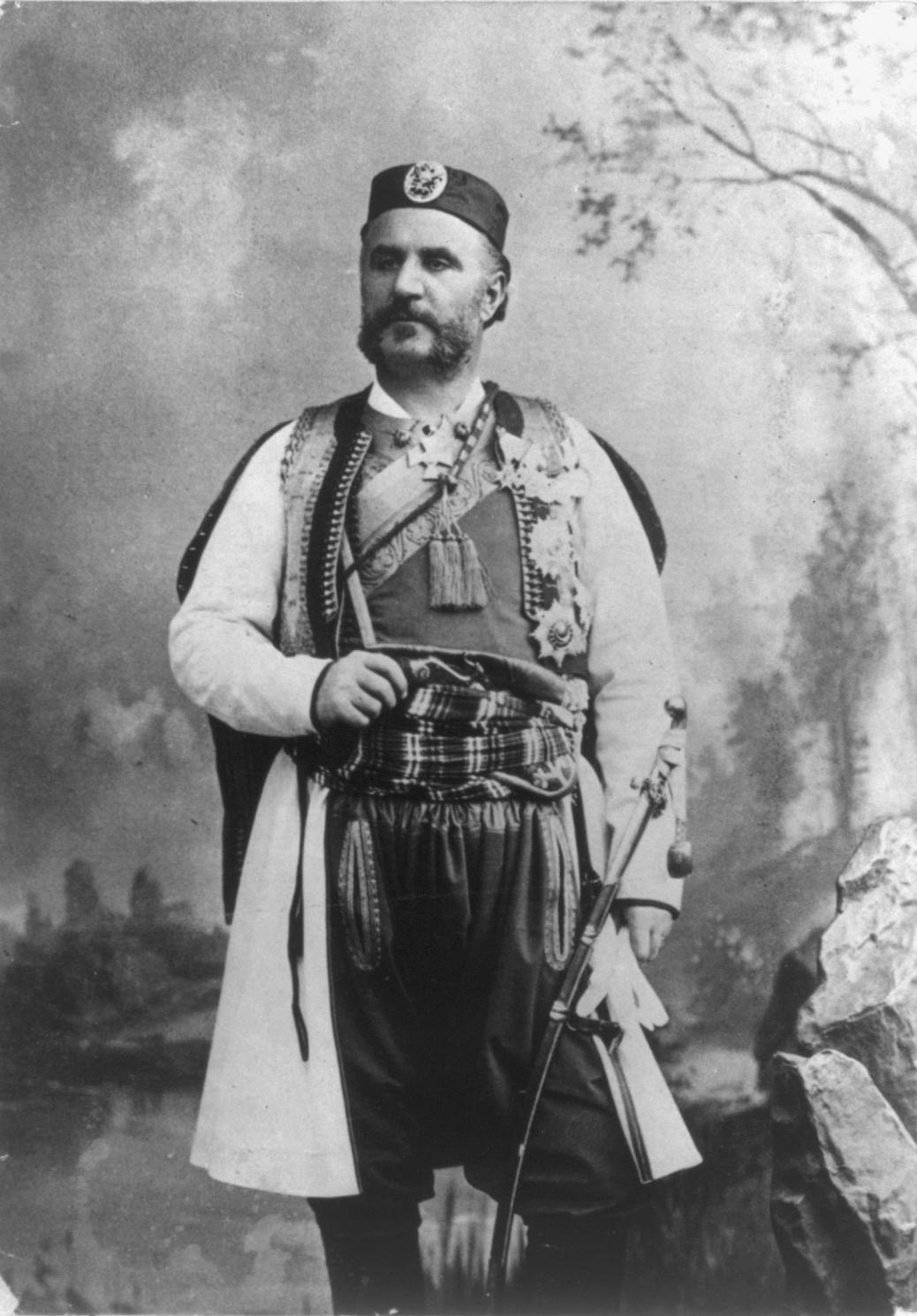|
Petrović-Njegoš Dynasty
Petrović-Njegoš (Serbian Cyrillic: , / ) is the Serbian family that ruled Montenegro from 1697 to 1916. Montenegro was ruled from its inception by ''vladikas'' ( prince-bishops) since 1516, who had a dual temporal and spiritual role. In 1697, the office was made hereditary in the Petrović-Njegoš family. However, since Orthodox bishops are required to be celibate, the crown passed from uncle to nephew. In 1852, Prince-Bishop Danilo II opted to marry and to secularize Montenegro, becoming Prince Danilo I. His successor, Nikola I, raised Montenegro to a kingdom in 1910. In 1916, King Nikola I was ousted by the invasion and occupation of his country by Austria-Hungary. He was formally deposed by the Podgorica Assembly in 1918 and the country merged with Kingdom of Serbia and shortly thereafter merged again with the State of Slovenes, Croats and Serbs to form the Kingdom of Serbs, Croats and Slovenes. A period of eighty years of control from Belgrade followed, during which t ... [...More Info...] [...Related Items...] OR: [Wikipedia] [Google] [Baidu] |
Royal House
A dynasty is a sequence of rulers from the same family,''Oxford English Dictionary'', "dynasty, ''n''." Oxford University Press (Oxford), 1897. usually in the context of a monarchical system, but sometimes also appearing in republics. A dynasty may also be referred to as a "house", "family" or "clan", among others. Historians periodize the histories of many states and civilizations, such as Ancient Iran (3200 - 539 BC), Ancient Egypt (3100 – 30 BC) and Ancient and Imperial China (2070 BC – AD 1912), using a framework of successive dynasties. As such, the term "dynasty" may be used to delimit the era during which a family reigned. Before the 18th century, most dynasties throughout the world have traditionally been reckoned patrilineally, such as those that follow the Frankish Salic law. In polities where it was permitted, succession through a daughter usually established a new dynasty in her husband's family name. This has changed in all of Europe's remaining mo ... [...More Info...] [...Related Items...] OR: [Wikipedia] [Google] [Baidu] |
Podgorica Assembly
The Great National Assembly of the Serb People in Montenegro ( sr, Велика народна скупштина српског народа у Црној Гори, Velika narodna skupština srpskog naroda u Crnoj Gori), commonly known as the Podgorica Assembly (, ), was an ''ad hoc'' assembly convened in November 1918, after the end of World War I in the Kingdom of Montenegro. The assembly was held by the Montenegrin authorities with the goal of dethroning the Montenegrin Petrović-Njegoš dynasty in favour of the Serbian House of Karađorđević, in order to formalise the unification between the Serbian and Montenegrin kingdoms. It was organized by a committee appointed by the Serbian government. The two opposing sides at the assembly were the Whites who were in favour of an annexation-based unification, and the Greens who were in favour of a confederation-based unification. The assembly concluded the decision to merge Montenegro with Serbia, which subsequently led to the cre ... [...More Info...] [...Related Items...] OR: [Wikipedia] [Google] [Baidu] |
Belgrade
Belgrade ( , ;, ; names in other languages) is the capital and largest city in Serbia. It is located at the confluence of the Sava and Danube rivers and the crossroads of the Pannonian Plain and the Balkan Peninsula. Nearly 1,166,763 million people live within the administrative limits of the City of Belgrade. It is the third largest of all cities on the Danube river. Belgrade is one of the oldest continuously inhabited cities in Europe and the world. One of the most important prehistoric cultures of Europe, the Vinča culture, evolved within the Belgrade area in the 6th millennium BC. In antiquity, Thraco-Dacians inhabited the region and, after 279 BC, Celts settled the city, naming it '' Singidūn''. It was conquered by the Romans under the reign of Augustus and awarded Roman city rights in the mid-2nd century. It was settled by the Slavs in the 520s, and changed hands several times between the Byzantine Empire, the Frankish Empire, the Bulgarian Empire, and t ... [...More Info...] [...Related Items...] OR: [Wikipedia] [Google] [Baidu] |
Kingdom Of Serbs, Croats And Slovenes
Kingdom commonly refers to: * A monarchy ruled by a king or queen * Kingdom (biology), a category in biological taxonomy Kingdom may also refer to: Arts and media Television * ''Kingdom'' (British TV series), a 2007 British television drama starring Stephen Fry * ''Kingdom'' (American TV series), a 2014 US television drama starring Frank Grillo * ''Kingdom'' (South Korean TV series), a 2019 South Korean television series *'' Kingdom: Legendary War'', a 2021 South Korean television series Music * Kingdom (group), a South Korean boy group * ''Kingdom'' (Koda Kumi album), 2008 * ''Kingdom'' (Bilal Hassani album), 2019 * ''Kingdom'' (Covenant Worship album), 2014 * ''Kingdoms'' (Life in Your Way album), 2011 * ''Kingdoms'' (Broadway album), 2009 * ''Kingdom'' (EP), a 1998 EP by Vader * "Kingdom" (Dave Gahan song), 2007 * "Kingdom" (Maverick City Music and Kirk Franklin song), 2022 * "Kingdom", a song by Battle Beast on their 2013 album '' Battle Beast'' * "Kingdom", a so ... [...More Info...] [...Related Items...] OR: [Wikipedia] [Google] [Baidu] |
State Of Slovenes, Croats And Serbs
The State of Slovenes, Croats and Serbs ( sh, Država Slovenaca, Hrvata i Srba / ; sl, Država Slovencev, Hrvatov in Srbov) was a political entity that was constituted in October 1918, at the end of World War I, by Slovenes, Croats and Serbs ( Prečani) residing in what were the southernmost parts of the Austro-Hungarian Empire. Although internationally unrecognised, this was the first incarnation of a Yugoslav state founded on the Pan-Slavic ideology. Thirty-three days after it was proclaimed, the state joined the Kingdom of Serbia and the Kingdom of Montenegro to form the Kingdom of Serbs, Croats and Slovenes. Name The state's name derives from the three main South Slavic ethnic groups that inhabited it: the Slovenes, Croats, and Serbs. The Croats identified in the name were those residing in the preceding kingdoms of Croatia-Slavonia, Bosnia and Herzegovina and Dalmatia (including Boka Kotorska). The Serbs identified in the name were those residing in Bosnia and Herz ... [...More Info...] [...Related Items...] OR: [Wikipedia] [Google] [Baidu] |
Kingdom Of Serbia
The Kingdom of Serbia ( sr-cyr, Краљевина Србија, Kraljevina Srbija) was a country located in the Balkans which was created when the ruler of the Principality of Serbia, Milan I, was proclaimed king in 1882. Since 1817, the Principality was ruled by the Obrenović dynasty (replaced by the Karađorđević dynasty for a short time). The Principality, under the suzerainty of the Ottoman Empire, '' de facto'' achieved full independence when the last Ottoman troops left Belgrade in 1867. The Congress of Berlin in 1878 recognized the formal independence of the Principality of Serbia, and in its composition Nišava, Pirot, Toplica and Vranje districts entered the South part of Serbia. In 1882, Serbia was elevated to the status of a kingdom, maintaining a foreign policy friendly to Austria-Hungary. Between 1912 and 1913, Serbia greatly enlarged its territory through engagement in the First and Second Balkan Wars— Sandžak-Raška, Kosovo Vilayet and Vardar Maced ... [...More Info...] [...Related Items...] OR: [Wikipedia] [Google] [Baidu] |
Austria-Hungary
Austria-Hungary, often referred to as the Austro-Hungarian Empire,, the Dual Monarchy, or Austria, was a constitutional monarchy and great power in Central Europe between 1867 and 1918. It was formed with the Austro-Hungarian Compromise of 1867 in the aftermath of the Austro-Prussian War and was dissolved shortly after its defeat in the First World War. Austria-Hungary was ruled by the House of Habsburg and constituted the last phase in the constitutional evolution of the Habsburg monarchy. It was a multinational state and one of Europe's major powers at the time. Austria-Hungary was geographically the second-largest country in Europe after the Russian Empire, at and the third-most populous (after Russia and the German Empire). The Empire built up the fourth-largest machine building industry in the world, after the United States, Germany and the United Kingdom. Austria-Hungary also became the world's third-largest manufacturer and exporter of electric home appliances, elect ... [...More Info...] [...Related Items...] OR: [Wikipedia] [Google] [Baidu] |
Nicholas I Of Montenegro
Nikola I Petrović-Njegoš ( sr-cyr, Никола I Петровић-Његош; – 1 March 1921) was the last monarch of Montenegro from 1860 to 1918, reigning as prince from 1860 to 1910 and as the country's first and only king from 1910 to 1918. Biography Early life Nikola was born in the village of Njeguši, the home of the reigning House of Petrović. He was the son of Mirko Petrović-Njegoš, a celebrated Montenegrin warrior (an elder brother to Danilo I of Montenegro) and his wife, Anastasija Martinovich (1824–1895). After 1696, when the dignity of vladika, or prince-bishop, became hereditary in the Petrović family, the sovereign power had descended from uncle to nephew, the vladikas belonging to the order of the black clergy (i.e., monastic clergy) who are forbidden to marry. A change was introduced by Danilo I, who declined the episcopal office, married and declared the principality hereditary in the direct male line. Mirko Petrović-Njegoš having renounced his cl ... [...More Info...] [...Related Items...] OR: [Wikipedia] [Google] [Baidu] |
Danilo I, Prince Of Montenegro
Danilo I Petrović-Njegoš ( sr-cyr, Данило I Петровић-Његош; 25 May 1826 – 13 August 1860) was the ruling Prince of Montenegro from 1851 to 1860. The beginning of his reign marked the transition of Montenegro from an archaic form of government ( Prince-Bishopric) into a secular Principality. He became involved in a war with the Ottoman Empire in 1852, the Porte claiming jurisdiction in Montenegro, and the boundaries between the two countries were not defined until 1858. Danilo, with the help of his elder brother, Voivode Mirko, defeated the Ottomans at Ostrog in 1853 and in the Battle of Grahovac in 1858. The town of Danilovgrad is named after him. Rise to power as Prince When Petar II Petrović-Njegoš died, the Senate, under the influence of Đorđije Petrović (the wealthiest Montenegrin at the time), proclaimed Petar's elder brother Pero Tomov as Prince (not bishop, or ''Vladika''). Nevertheless, in a brief struggle for power, Pero, who commanded ... [...More Info...] [...Related Items...] OR: [Wikipedia] [Google] [Baidu] |
Vladika
Vladika or Wladika ( sr, владика) is a Slavic title and address of bishops in the Eastern Orthodox Church. In Old Church Slavonic, the meaning of the word is ''Mr.'' From the early-16th to the mid-19th century in Montenegro, the title referred to the bishop of Cetinje, who also served as the spiritual leader and the prince of the Prince-Bishopric of Montenegro The Prince-Bishopric of Montenegro ( sr, Митрополство Црногорско, Mitropolstvo Crnogorsko) was an ecclesiastical principality that existed from 1516 until 1852. The principality was located around modern-day Montenegro. It .... References * See also * List of Metropolitans of Montenegro * {{authority control Eastern Christian ecclesiastical offices Eastern Orthodox bishops Metropolitans of Montenegro ... [...More Info...] [...Related Items...] OR: [Wikipedia] [Google] [Baidu] |
Serbs
The Serbs ( sr-Cyr, Срби, Srbi, ) are the most numerous South Slavic ethnic group native to the Balkans in Southeastern Europe, who share a common Serbian ancestry, culture, history and language. The majority of Serbs live in their nation state of Serbia, as well as in Bosnia and Herzegovina, Croatia, Montenegro, and Kosovo. They also form significant minorities in North Macedonia and Slovenia. There is a large Serb diaspora in Western Europe, and outside Europe and there are significant communities in North America and Australia. The Serbs share many cultural traits with the rest of the peoples of Southeast Europe. They are predominantly Eastern Orthodox Christians by religion. The Serbian language (a standardized version of Serbo-Croatian) is official in Serbia, co-official in Kosovo and Bosnia and Herzegovina, and is spoken by the plurality in Montenegro. Ethnology The identity of Serbs is rooted in Eastern Orthodoxy and traditions. In the 19th century, the S ... [...More Info...] [...Related Items...] OR: [Wikipedia] [Google] [Baidu] |

.jpg)


